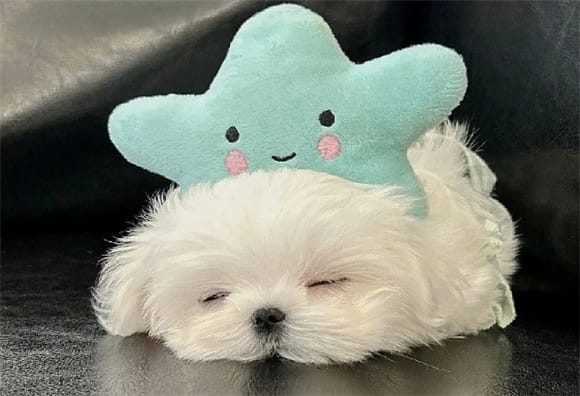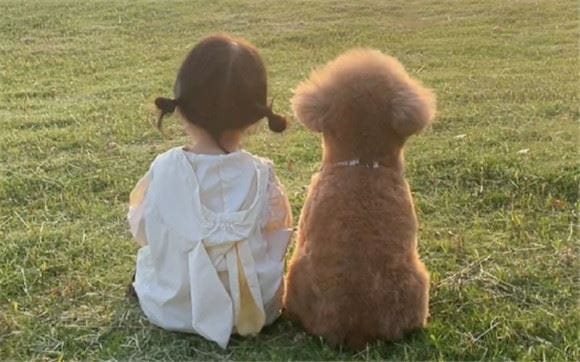Every senior poop shoveler must have heard of "cryptorchidism" in dogs. From a medical point of view, cryptorchidism in dogs refers to the failure of one or both testicles to descend into the scrotum. A sign of stunted development.
It is worth noting that this "failure to descend into the scrotum" means that the dog's testicles may stay anywhere on this "journey", even in the dog's abdominal cavity!

What exactly is cryptorchidism?
Cryptorchidism, also known as residual testicles or unapparent testicles, is when a male puppy reaches 6 months of age and one or two testicles have not yet developed in the scrotum. Typically, testicles will appear within six to eight weeks. However, in some dogs, the testicles may remain in the abdomen or never develop. Even dogs with cryptorchidism can still be fertile, depending on the number and location of their remaining testicles.
Cryptorchidism is very common in male dogs, with an incidence rate as high as 10%. The condition is one of the most common birth defects in purebred dogs (11%), with an incidence of 14% in Siberian Huskies according to one study. Although its genetics are not fully understood, it is thought to be recessive and possibly polygenic. Some speculate that this is a sex-restricted autosomal recessive inheritance, but it is unlikely that this inheritance is simply recessive. Cryptorchidism can be bilateral (causing infertility) or unilateral, and can be inguinal or abdominal (or both). Since cryptorchidism is a genetic trait, affected dogs should not be bred and should be castrated. Once this condition occurs, the dog's male and female parents are considered carriers of the defect. Littermates may be normal dogs, or they may be carriers or patients with cryptorchidism. There is also a high incidence of testicular cancer, especially Sertoli cell tumors, so cryptorchid dogs should be considered for castration. Dogs with indwelling testicles are 13.6 times more likely to develop testicular cancer than normal dogs.
Causes of Canine Cryptorchidism
During a dog’s development, the testicles are located in the abdomen. Typically, when male dogs are 6 to 8 weeks old, the testicles pass through the inguinal canal and into the scrotum. By the time the puppy is 6 months old, all testicles should be fully hanging down. However, sometimes one or both testicles remain in the abdomen and cannot hang properly when the puppy matures. This situation can lead to cryptorchidism in dogs. Most owners should check their puppies for this condition before bringing them home, as male dogs of any breed can develop retained testicles (cryptorchidism). This disorder has a strong genetic component and is thought to be inherited as an autosomal recessive disorder. But other causes of cryptorchidism remain a mystery.
Common Cryptorchid Dog Breeds
Alaskan Malamute
- Boxer Dog
- Chihuahua
- Dachshund Dog (miniature)
- Bulldog
- Maltese
- Miniature Schnauzer
- Pekingese
- Pomeranian
- Poodle (toy and miniature)
- Pug
- Shetland Sheepdog
p>- Siberian Husky
- Whippet
- Yorkshire Bull Terrier
Canine Cryptorchidism Symptoms
Cryptorchidism is usually asymptomatic and rarely painful. In fact, many owners are unaware that their dogs have cryptorchidism. But it's important to treat the disease because dogs with cryptorchidism have a significantly increased risk of developing testicular cancer.

What are the increased risks for dogs?
- Testicular infection
- Testicular tumors
- Acute abdominal pain (caused by residual testicles)
- Hair loss
- External genital changes Melanoma (pigmentation)
- Estrogenization (Stotocystoma in the indwelling testicle secretes estrogen)
- Testicular skin laxity
Although cryptorchidism Symptoms are usually mild or subtle, but the disease does carry some risks. Preserved testicles are associated with a much higher incidence of morbidity than normal testicles, including infection and testicular cancer. They are also prone to "twisting," which can lead to extremely severe acute abdominal pain. Some dogs with cryptorchidism are able to get female dogs pregnant because only one testicle is removed and the other is not.
Treatment
The treatment for cryptorchidism is always through castration (removal of both testicles), and most people believe that dogs with cryptorchidism should not be considered for breeding ( fertility). Their father, male brothers and any male offspring increase the chance of being carriers of the gene, which they may pass on to their offspring even if they themselves are asymptomatic.
Cryptorchidism is difficult to detect, and transabdominal ultrasound can help veterinarians find testicles left in the abdomen. Cryptorchidectomy, however, is more expensive than regular sterilization surgery because it requires an abdominal ultrasound. In rare cases, we can manually massage the retained testicle into the scrotum, which is easier and less expensive. Surgical relocation of a retained testicle into the scrotum is often considered an unethical procedure.
After cryptorchidism surgery, the dog needs some time to recover. It should be well cared for and its activities should be restricted for one to two weeks until the surgical incision is completely healed and swollen.
Special Tips
Male dogs with cryptorchidism must not be used for breeding! If you want your dog to reproduce, make sure its testicles develop normally!

 扫一扫微信交流
扫一扫微信交流
发布评论